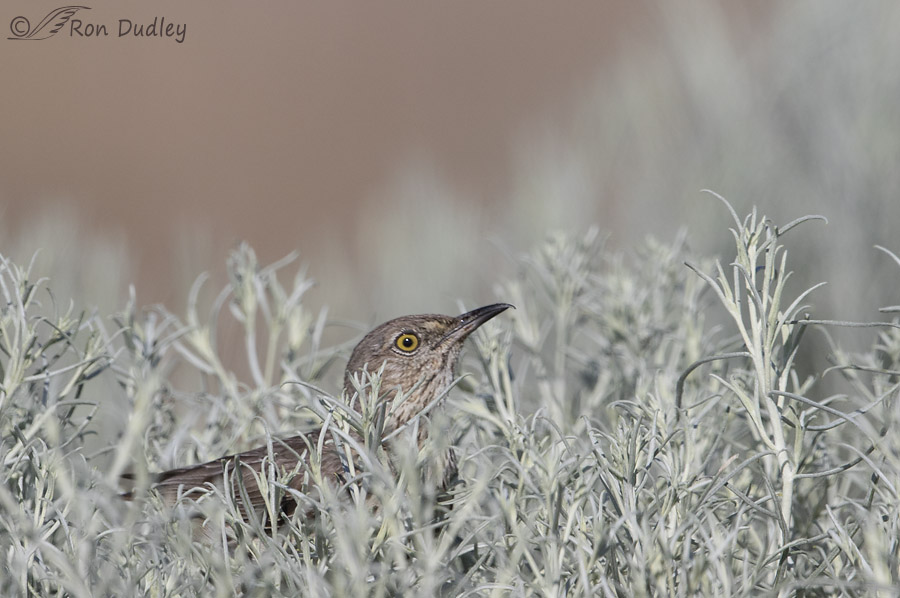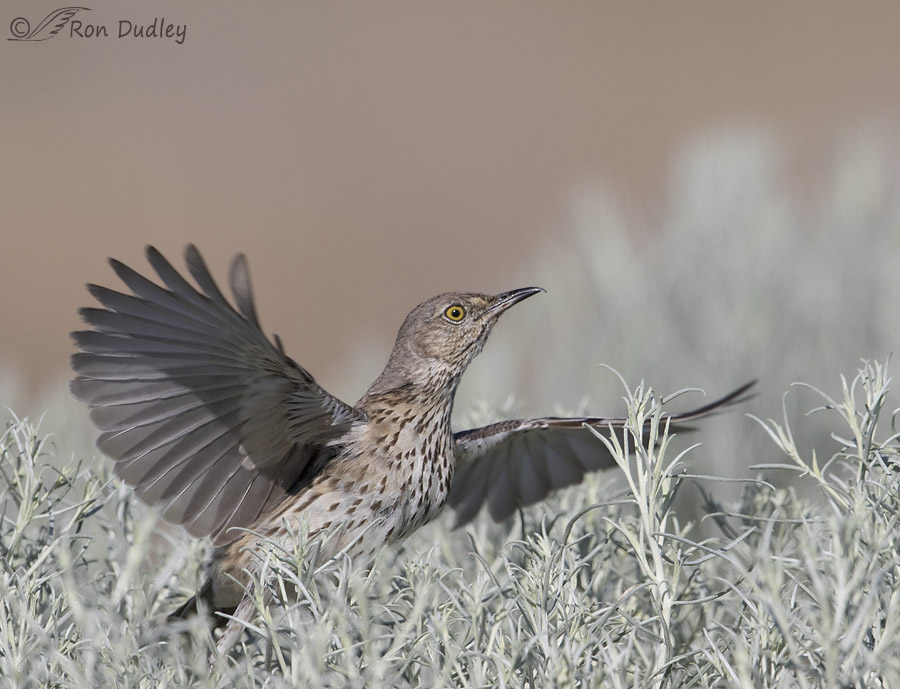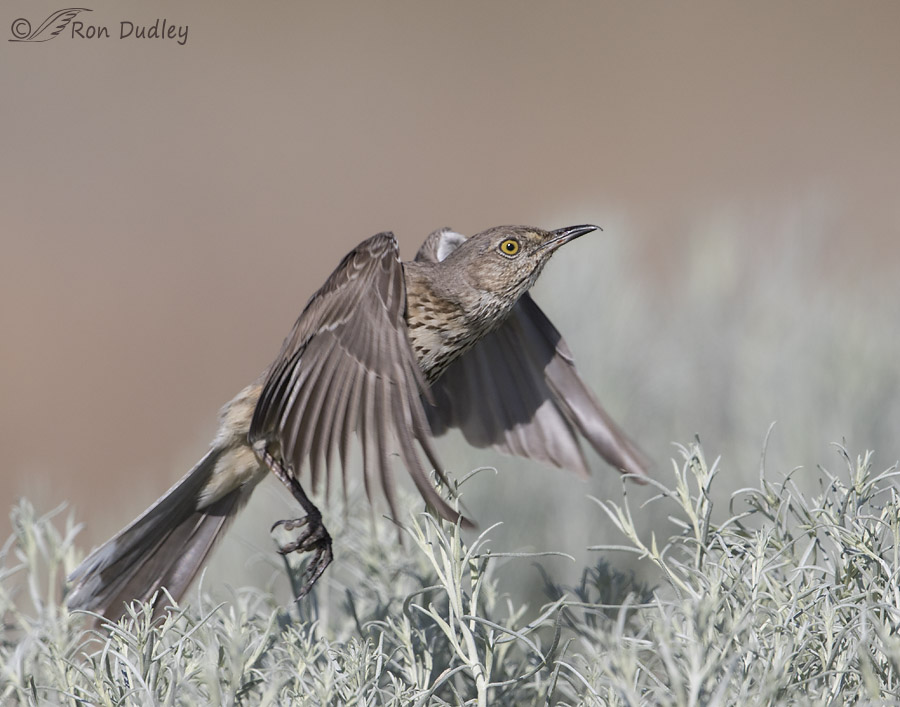This bird was playing peekaboo with me before it took off.
Sage Thrashers are sagebrush obligates and generally require large patches of it for successful breeding. They’re truly at home in and on sagebrush- using it for cover, as a nesting site and as a singing perch. The vast majority of my photos of the species show sagebrush in the setting.
The following three images are consecutive shots in a burst.

1/3200, f/7.1, ISO 500, Canon 7D Mark II, Canon EF500mm f/4L IS II USM +1.4 tc, not baited, set up or called in
Eleven days ago I found this thrasher buried in the sagebrush on Antelope Island. When it squatted down its head was about all I could see so I attempted to focus on the eye and hoped for a takeoff that would give me a good look at the bird in an interesting flight posture which wasn’t likely for a variety of reasons.

1/3200, f/7.1, ISO 500, Canon 7D Mark II, Canon EF500mm f/4L IS II USM +1.4 tc, not baited, set up or called in
But I actually liked the first shot as it launched. Normally it’s my preference to not have this much of a bird obscured by vegetation but this one works for me largely because it shows the thrasher rising almost phoenix-like out of the sagebrush that it’s so intimate with.

1/3200, f/7.1, ISO 500, Canon 7D Mark II, Canon EF500mm f/4L IS II USM +1.4 tc, not baited, set up or called in
Typically, even at the 10 frames/sec burst rate of my camera, I wouldn’t get this last shot of a small songbird taking off because the bird would have already left the frame but I have a theory as to why I was successful this time. Because the thrasher was so deeply buried in the sagebrush it only had room for a shortened first down stroke of its wings so initially it didn’t get as much lift from that first stroke as it would from a more elevated perch.
At least that’s my theory. Who knows what really happened…
Ron
Addendum: After the big deal I made about this thrasher being on sagebrush in this post it turns out that it isn’t sagebrush but rabbitbrush instead. I know the difference but just screwed up. Hate it when I make such a significant error in public! Won’t be the first time though, and probably not the last either. Thanks to Dan for alerting me in his comment below.


The title caught my eye and I wanted to see this , made me appreciate the bird and its habitat.
spectacular series of images, Ron!!!!!!!
Wonderful. I especially like the 2nd pic.
Sensational shots Ron!
Charlotte
Thank you, Charlotte.
Love them all, but that second shot is special. The effort is evident, the shadows, the triumphant emerging…
“the triumphant emerging”
I like that phrasing, EC.
Great series, Ron!! The Phoenix Rising is so correct for you 2nd capture!! I bet your spirit was soaring with him as he took off. Nature & wildlife brings such joy to us!!
Yup, it was pretty fun to catch it coming out of the rabbitbrush like that, Jo Ann. Thanks.
That second shot is the money-maker for me. It really is awesome!
That’s my favorite too, Arwen. Thanks.
That is rubber rabbitbrush rather than big sagebrush.
Ha! You’re right, Dan. I know the difference too. My excuse (poor as it is) is that I was a hurry to go shooting this morning and just missed the error. I’ll correct it with a note at the end of the post. Thanks for the heads up.
Great pictures. Thanks for sharing your work and talents.
Your pictures are so detail, almost like but not a painting. Look forward to starting the morning and seeing what you have taken.
Thanks, Steven. It’s nice to know that I contribute positively to your mornings!
Interesting series…it looks like the bird uses a shove from its strong legs to push up from that deep sage, helping to free its wings for a powerful downstroke,and get air born…sage is vital for so many species, the practice of chaining, burning, and dozing make sick at heart!
When I first scanned through these images and before I read your comments, my immediate thought on seeing the second image was “like the Phoenix rising”…
Great minds think alike..
Although it’s obvious that mine isn’t so great after that sagebrush error…
“it looks like the bird uses a shove from its strong legs to push up from that deep sage”
That’s exactly what it did, Patty.
I like your theory ….. and the images.
Thanks, Dave – on both counts.